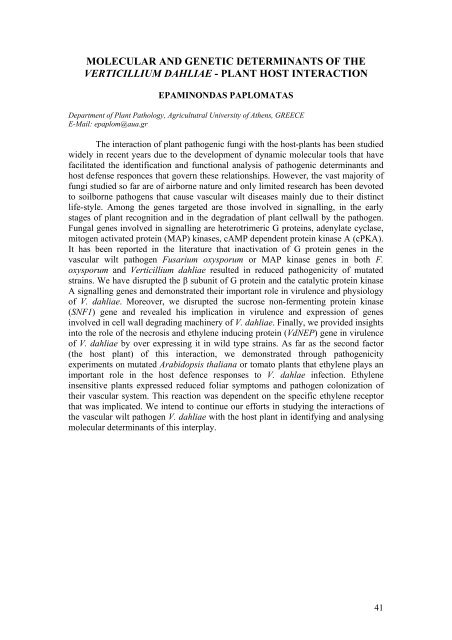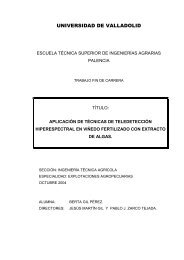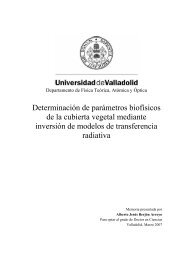10th INTERNATIONAL VERTICILLIUM SYMPOSIUM 16-20 ...
10th INTERNATIONAL VERTICILLIUM SYMPOSIUM 16-20 ...
10th INTERNATIONAL VERTICILLIUM SYMPOSIUM 16-20 ...
Create successful ePaper yourself
Turn your PDF publications into a flip-book with our unique Google optimized e-Paper software.
MOLECULAR AND GENETIC DETERMINANTS OF THE<strong>VERTICILLIUM</strong> DAHLIAE - PLANT HOST INTERACTIONEPAMINONDAS PAPLOMATASDepartment of Plant Pathology, Agricultutral University of Athens, GREECEE-Mail: epaplom@aua.grThe interaction of plant pathogenic fungi with the host-plants has been studiedwidely in recent years due to the development of dynamic molecular tools that havefacilitated the identification and functional analysis of pathogenic determinants andhost defense responces that govern these relationships. However, the vast majority offungi studied so far are of airborne nature and only limited research has been devotedto soilborne pathogens that cause vascular wilt diseases mainly due to their distinctlife-style. Among the genes targeted are those involved in signalling, in the earlystages of plant recognition and in the degradation of plant cellwall by the pathogen.Fungal genes involved in signalling are heterotrimeric G proteins, adenylate cyclase,mitogen activated protein (MAP) kinases, cAMP dependent protein kinase A (cPKA).It has been reported in the literature that inactivation of G protein genes in thevascular wilt pathogen Fusarium oxysporum or MAP kinase genes in both F.oxysporum and Verticillium dahliae resulted in reduced pathogenicity of mutatedstrains. We have disrupted the β subunit of G protein and the catalytic protein kinaseA signalling genes and demonstrated their important role in virulence and physiologyof V. dahliae. Moreover, we disrupted the sucrose non-fermenting protein kinase(SNF1) gene and revealed his implication in virulence and expression of genesinvolved in cell wall degrading machinery of V. dahliae. Finally, we provided insightsinto the role of the necrosis and ethylene inducing protein (VdNEP) gene in virulenceof V. dahliae by over expressing it in wild type strains. As far as the second factor(the host plant) of this interaction, we demonstrated through pathogenicityexperiments on mutated Arabidopsis thaliana or tomato plants that ethylene plays animportant role in the host defence responses to V. dahlae infection. Ethyleneinsensitive plants expressed reduced foliar symptoms and pathogen colonization oftheir vascular system. This reaction was dependent on the specific ethylene receptorthat was implicated. We intend to continue our efforts in studying the interactions ofthe vascular wilt pathogen V. dahliae with the host plant in identifying and analysingmolecular determinants of this interplay.41




